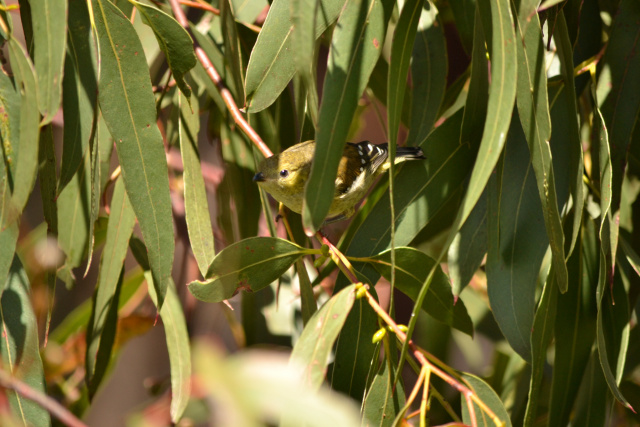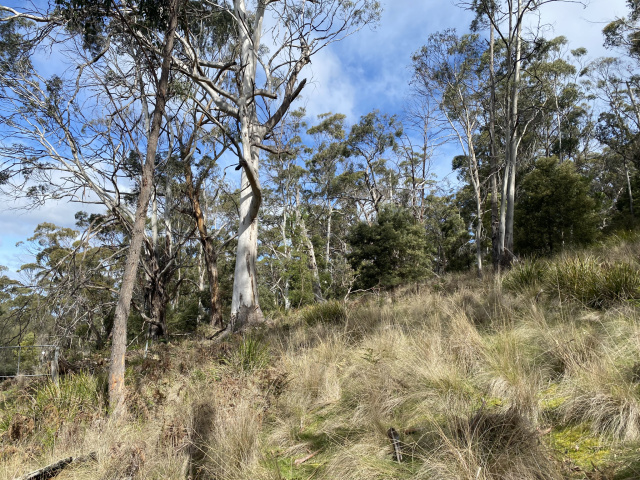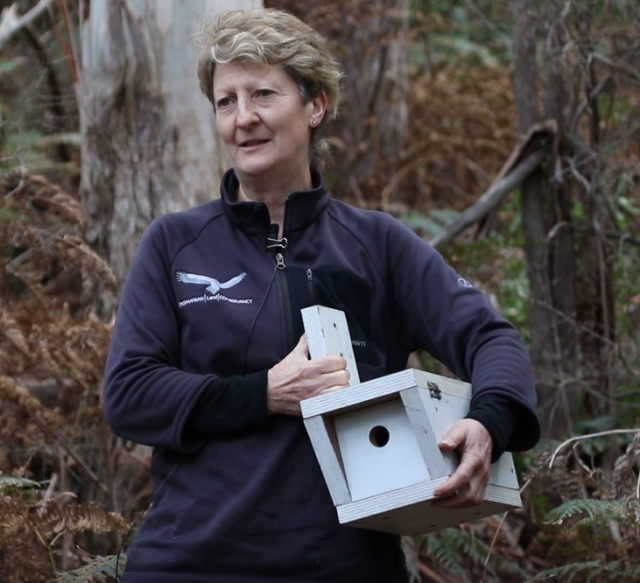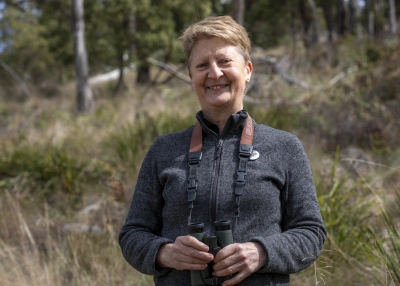This tiny bird uses the hook or overhang on its beak to farm the small branchlets and twigs on white gum Eucalyptus viminalis to stimulate production of manna.
Droplets of sweet sugary manna form and harden at the damage sites which are then picked off by the adults and fed to the chicks during the breeding season. Manna constitutes about 84% of the nestling’s diet, showing how critical it is as a food source for the species. Adults repeatedly cut serrations or grooves to keep the manna flowing and defend the resource from hungry competitors.

In the animal kingdom you could probably count on one hand how many species cultivate their own food and when researchers identified how this was occurring back in the mid-2000, was like the final piece of the jigsaw to me.
Within a few hours of cutting a groove, droplets of manna start to form and if you keep the groove open the manna will continue. It's like a running sap. When it hardens and crystallizes it tastes like icing sugar and chemically is a combination of sucrose and raffinose.
Most of our honeyeaters are attracted to manna so there is a lot of competition.
And even though forty-spots eat lerp, insects and other invertebrates, it's the manna from white gum that is the critical link for this species' ecology.
The story of producing manna for forty-spots tells us how important big trees are, because one beautiful conditioned old white gum with a healthy spreading canopy and small nest cavity, may be all that is needed for a family of pardalotes during the breeding season.

The closer the breeding hollow is to your food source the less energy adults spend flying to and from the chicks and the less time available for others to steal the nectar. It all makes ecological sense when you think about it. This means the forty-spot has two critical factors that are both in decline and precariously tied together.
But I witnessed a dramatic and emerging threat back in 2010 when I was doing a population assessment. I began seeing a staggering amount of white gum dieback and decline, due to drought and climate change.
On Maria and Bruny Island I saw whole hillsides of dead white gums. Once beautiful old viminalis were now dead and collapsing. Die back moving from the lower limbs upwards to the canopy due to long periods of drought, curled and brittle leaves and branchlets without invertebrates or ability to produce manna.
The old saying ‘death by a thousand cuts’ describes a parasitic fly threat recorded in 2019 causing up to 81% mortality of chicks in nesting boxes.
Researchers swung into action by installing ‘feather dispensers’ of insecticide chicken feathers on offer to adult forty-spots to line their nests and reduce fly strike. A smart novel solution to a significant threat. We're seeing some really applied research addressing some of these challenging questions; it’s vital to the recovery effort.


Dr Sally Bryant
This tiny bird uses the hook or overhang on its beak to farm the small branchlets and twigs on white gum Eucalyptus viminalis to stimulate production of manna.
Droplets of sweet sugary manna form and harden at the damage sites which are then picked off by the adults and fed to the chicks during the breeding season. Manna constitutes about 84% of the nestling’s diet, showing how critical it is as a food source for the species. Adults repeatedly cut serrations or grooves to keep the manna flowing and defend the resource from hungry competitors.

In the animal kingdom you could probably count on one hand how many species cultivate their own food and when researchers identified how this was occurring back in the mid-2000, was like the final piece of the jigsaw to me.
Within a few hours of cutting a groove, droplets of manna start to form and if you keep the groove open the manna will continue. It's like a running sap. When it hardens and crystallizes it tastes like icing sugar and chemically is a combination of sucrose and raffinose.
Most of our honeyeaters are attracted to manna so there is a lot of competition.
And even though forty-spots eat lerp, insects and other invertebrates, it's the manna from white gum that is the critical link for this species' ecology.
The story of producing manna for forty-spots tells us how important big trees are, because one beautiful conditioned old white gum with a healthy spreading canopy and small nest cavity, may be all that is needed for a family of pardalotes during the breeding season.

The closer the breeding hollow is to your food source the less energy adults spend flying to and from the chicks and the less time available for others to steal the nectar. It all makes ecological sense when you think about it. This means the forty-spot has two critical factors that are both in decline and precariously tied together.
But I witnessed a dramatic and emerging threat back in 2010 when I was doing a population assessment. I began seeing a staggering amount of white gum dieback and decline, due to drought and climate change.
On Maria and Bruny Island I saw whole hillsides of dead white gums. Once beautiful old viminalis were now dead and collapsing. Die back moving from the lower limbs upwards to the canopy due to long periods of drought, curled and brittle leaves and branchlets without invertebrates or ability to produce manna.
The old saying ‘death by a thousand cuts’ describes a parasitic fly threat recorded in 2019 causing up to 81% mortality of chicks in nesting boxes.
Researchers swung into action by installing ‘feather dispensers’ of insecticide chicken feathers on offer to adult forty-spots to line their nests and reduce fly strike. A smart novel solution to a significant threat. We're seeing some really applied research addressing some of these challenging questions; it’s vital to the recovery effort.

You might like...

Bruny Island nesting box project

Improving reproductive success of forty spotted pardalotes

A hopeful road-map for saving the Forty Spotted Pardalote

The beauty of nature guiding
Newsletter
Sign up to keep in touch with articles, updates, events or news from Kuno, your platform for nature
